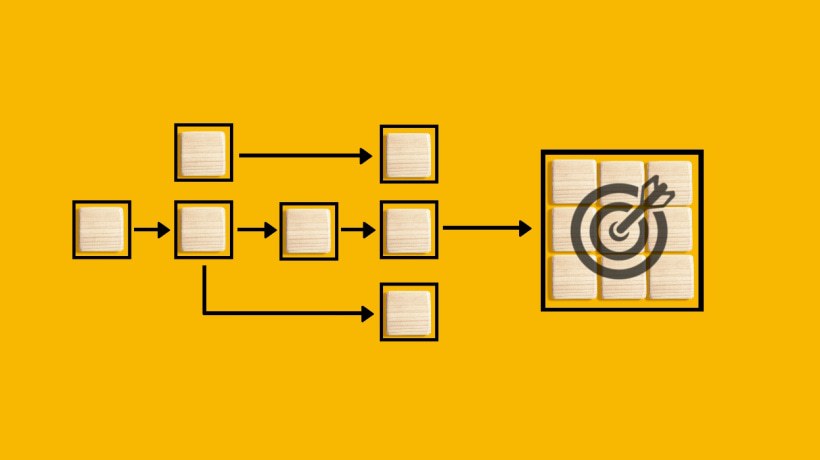How BPM Can Streamline Your L&D Operations
In an age of continuous learning, L&D is no longer just a support function, it's a strategic powerhouse. Yet, even as organizations embrace upskilling, reskilling, and compliance-based training, many L&D teams are still stuck managing operations manually. Emails. Spreadsheets. Disconnected systems. Sound familiar? That's where business process management (BPM) comes in.
BPM isn't just about automating repetitive tasks, it's about rethinking how your training processes work, finding and fixing bottlenecks, and ensuring seamless collaboration across stakeholders. For modern L&D teams juggling remote workforces, global rollouts, and personalized learning experiences, BPM offers the structure and flexibility needed to thrive. In this article, we'll break down how BPM can revolutionize your L&D operations—making them more agile, efficient, and scalable—especially when powered by no-code platforms.
The Complexity Of Today's L&D Operations
Let's face it: L&D today is a high-stakes game. You're expected to:
- Launch personalized training paths.
- Track learning outcomes in real time.
- Comply with fast-changing regulations.
- Drive engagement across hybrid and global teams.
- Align learning with business KPIs.
All this, while managing a tech stack that likely includes an LMS, HRMS, communication tools, feedback forms, analytics dashboards, and more. The problem? These systems often don't talk to each other. And the processes behind them—training requests, course approvals, trainer scheduling, evaluation, feedback loops—are often scattered, inconsistent, and painfully manual. The result? Delays. Confusion. Missed deadlines. Poor learner experience. That's why L&D doesn't just need tools, it needs end-to-end process thinking.
What Is Business Process Management In L&D?
BPM is a discipline that focuses on designing, modeling, automating, and continuously improving processes. In the context of L&D, that means mapping out every step of your learning operations—from request to delivery to evaluation—and optimizing each of them for speed, clarity, and results. Think of BPM as the engine that powers seamless L&D workflows, whether it's:
- Onboarding new employees.
- Rolling out quarterly compliance training.
- Coordinating instructor-led sessions.
- Launching leadership development programs.
- Tracking training effectiveness.
With business process management, you can stop reacting to chaos and start driving structured, measurable outcomes.
6 Common Bottlenecks In Learning Operations (And How BPM Fixes Them)
Let's look at typical L&D headaches and how BPM can resolve them:
1. Training Requests Lost In Email Chains
- Before BPM
A manager sends an email requesting training. It's forwarded, lost, or delayed. - With BPM
A centralized, automated request workflow routes the form to the right stakeholders instantly, captures context, and stores everything for future reference.
2. Manual Approvals That Hold Everything Up
- Before BPM
Learning budgets, program approvals, and trainer contracts take weeks due to unclear hierarchies or missing documents. - With BPM
Rules-based routing ensures instant approval escalation, digital sign-offs, and complete audit trails.
3. Inconsistent Onboarding Experiences
- Before BPM
Some new hires get all required training. Others miss modules due to inconsistent communication. - With BPM
A predefined onboarding process triggers automated training assignments, nudges, and progress checks across roles and locations.
4. Trainer Scheduling Conflicts
- Before BPM
Double-booked sessions and last-minute cancellations. - With BPM
Calendars, resource availability, and logistics are coordinated in one place ensuring smoother planning.
5. Tracking Learning Outcomes Is A Nightmare
- Before BPM
Data lives in different systems. Reporting is manual and incomplete. - With BPM
Integrated dashboards pull real-time metrics from multiple sources—completion rates, feedback, knowledge retention scores—into one unified view.
6. Slow Feedback Loops
- Before BPM
Post-training evaluations get delayed, scattered, or ignored. - With BPM
Automated feedback forms are triggered immediately after sessions, followed by reminders and analytics that feed into continuous improvement.
BPM + No-Code = Game-Changing For L&D Teams
Here's where it gets exciting: you no longer need a dev team or months of custom software builds to implement BPM. Thanks to no-code BPM platforms, L&D leaders and Instructional Designers can:
- Design workflows visually.
- Set up automated triggers and conditions.
- Integrate with LMS, HRMS, email, Slack, etc.
- Launch, iterate, and improve without coding.
This democratizes process ownership, putting control in the hands of those who understand learning best.
Use Case: Automating Employee Onboarding
Let's illustrate this with a practical example.
Before BPM
- HR shares onboarding docs manually.
- L&D sends training invites via email.
- Progress is tracked in spreadsheets.
- IT shares login credentials after multiple reminders.
After BPM + No-Code
- New hire enters system → triggers a full onboarding workflow.
- System auto-assigns training based on role.
- Calendar invites, nudges, and deadlines are sent automatically.
- Completion is tracked in real time.
- Feedback forms are sent post-training.
- Managers get updates without chasing.
- Result
Faster onboarding, less admin burden, and a more professional, consistent learner experience.
How Business Process Management Helps L&D Align With Business Goals
When done right, BPM doesn't just make things smoother, it makes them more strategic.
- Faster time-to-competency
By automating processes, new hires get productive sooner. - Better compliance
Built-in workflows ensure nothing is skipped or forgotten. - Higher engagement
Personalized, well-timed communication boosts learner participation. - Smarter decisions
Unified data gives L&D leaders insights they can act on. - Agility
You can roll out new learning programs faster in response to changing business needs.
In short, BPM turns L&D from a reactive service function into a proactive enabler of business growth.
BPM In L&D: When To Start?
You don't need to be running a massive learning program to benefit from BPM. In fact, if you're facing any of these signs, it's time to act:
- "We're always chasing people for approvals."
- "We can't track training ROI effectively."
- "Every new learning request feels like reinventing the wheel."
- "Our onboarding experience depends on who's managing it."
Whichever stage you're at, start small: map one process (e.g., new training request workflow), automate it, and build from there.
Choosing The Right BPM Tool For L&D
When evaluating BPM platforms for your learning team, look for:
- Visual workflow builder.
Drag-and-drop simplicity - Role-based access.
Define who sees/does what - Integrations.
Works with your existing LMS, HRMS, comms tools - Analytics and dashboards.
Measure what matters - Scalability.
Grows as your training needs evolve - No-code interface.
Empower L&D teams directly
If you're already using a no-code platform, you likely have BPM capabilities baked in, so explore what you can automate today.
Final Thoughts: Operational Excellence Is Learning Excellence
In the race to build future-ready teams, it's easy to focus on content, tech, and learner engagement. But none of that works without smooth operations underneath. Think of BPM as the silent engine powering your learning machine.
By streamlining the way training is requested, approved, delivered, and measured, BPM gives L&D teams the time and clarity to focus on what matters most: developing people. The question isn't "Should we do this?"; it's "How soon can we start?"







